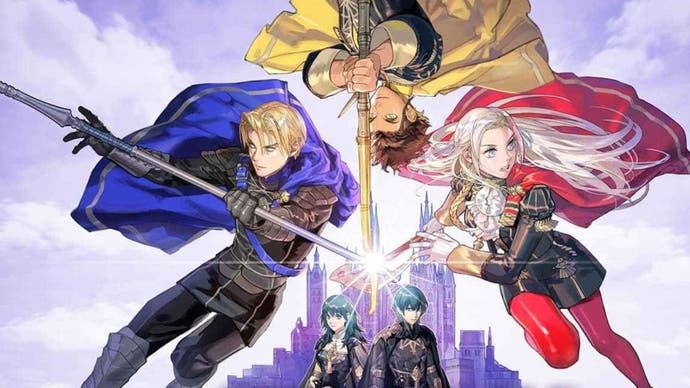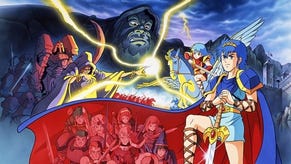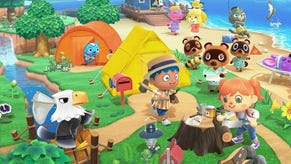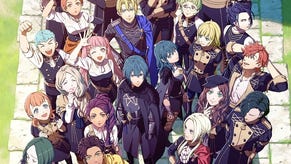Fire Emblem: Three Houses review - a tactical masterclass
House rules.
Excuse the well-worn cliché, but Fire Emblem: Three Houses really is a game of two halves. On the one hand, it's almost a dating sim - indeed, it might be one of the most lavish examples yet, fully voiced in either Japanese or English depending on your tastes, rich with romance options and side-stories to explore as you sprint around the halls of the Garegg Mach Monastery keeping tabs on the students under your tuition (yes, there's also the slightly icky premise of being a teacher romancing your students, but Three Houses makes a point early on of how young a professor you are, and how mature your students, on the cusp of graduation, are - so it's all totally fine).
On the other, though, it's a tightly engineered, staggeringly deep turn-based tactical game, serving up a smart evolution of the formula that Intelligent Systems has been developing for nearly 30 years now. Maybe that's a formula you're not familiar with, and if that's the case then imagine it something like this: it's Advance Wars, that other Intelligent Systems' turn-based series, but here your MD tank is a living, breathing thing that you can talk to and level up. Oh, and also you're trying to make your tanks rut so that at some point they might make small baby tanks that will inherit attributes from both parents.
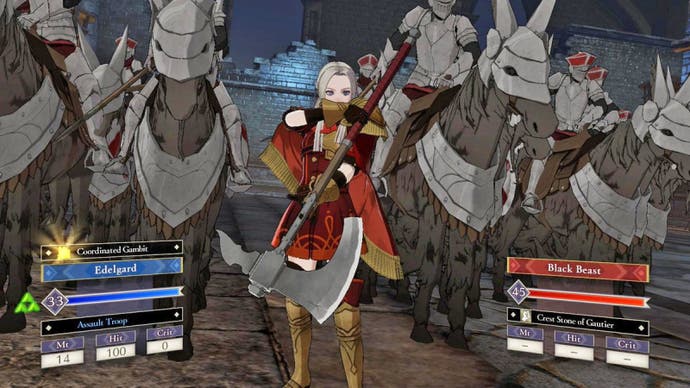
And really, who doesn't want to play that? There were plenty that didn't. Famously, 2012's Fire Emblem Awakening was originally imagined as the last of a series that was seen internally as on its last legs, though that 3DS title was met with huge success, even if it wasn't an unequivocal hit with the fans as it introduced some more colourful excesses and leaned in on the anime influence, to the disappointment of those raised on the more grounded originals. Those excesses were only amplified in the follow-up, 2015's Fates, and while they're reined in for Three Houses - thanks in part to the character art of series debutant and otome veteran Chinatsu Kurahana - traditionalists should be warned that, rather than providing a departure from the path that Awakening set the series on, this is a logical extension of it.
It's a full-blooded and generous extension, mind, and those same traditionalists should also be buoyed by the fact that Three Houses leans heavily on older, more classical expressions of Fire Emblem. Like Gaiden before it - itself remade for 2017's Shadows of Valentia - the weapon triangle is gone, while weapon durability is in. There's a rewind feature - again borrowed from Shadows of Valentia - that takes some of the pain away if you choose to play, as god intended, on Classic mode whereby permadeath is enabled, so that you can erase that one false move that saw an important character felled.
And the set-up is a lift from Genealogy of the Holy War - which I won't pretend to have played, as the 1996 SNES game never made it westwards - with childhood friends being called into battle against each other. Those friendships and rivalries are baked into the core of Three Houses, and force tough decisions from the very start. Indeed, probably the hardest one you'll make all game comes at the outset as you choose your school, each with their own set pupils (with the option to recruit others later in the campaign). There's the Black Eagles led by the noble-blooded Edelgard who excel at magic, the Blue Lions headed up by the prince Dimitri who are adept with swords and the Golden Deer, led by the dashing Claude, whose specialities lean towards archery.
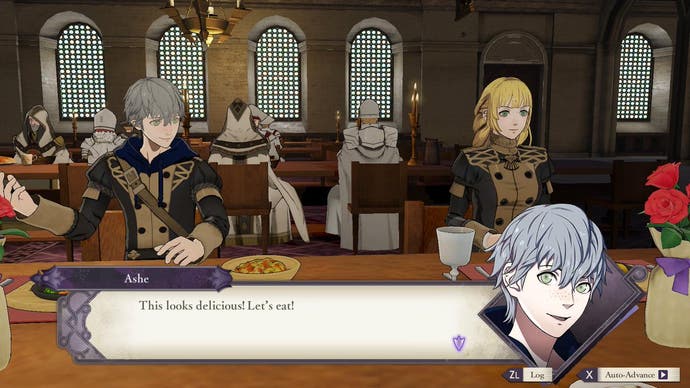
All of which means that, while there's some overlap, Three Houses effectively offers three campaigns. It's a lot of game, dauntingly so at times, though it's a much more satisfying solution than Fates' confusing division of its own campaign into separate titles. There's a divide within Three Houses itself, too, with the first half of the campaign based within the walls of the monastery as you teach your pupils, before hostilities break out in the latter half as the story skips forward and you engage in all-out war with rival houses.
Schoolyards and battlefields have much in common already, and there's a compelling rhythm flitting between the two in Three Houses. During the weekdays you're tutoring pupils, defining their curriculum and delivering lectures as you look to tailor their attributes and unlock talents. Or maybe you're out exploring the corridors and courtyards, talking to students of other schools and running errands. Or you're fishing, or taking part in choir practice, or embarking on school outings to help raise the motivation of the students in your charge. Or even heading out into battle in optional quests and 'paralogues' that serve as side-stories, whereby you might gain access to more powerful gear.
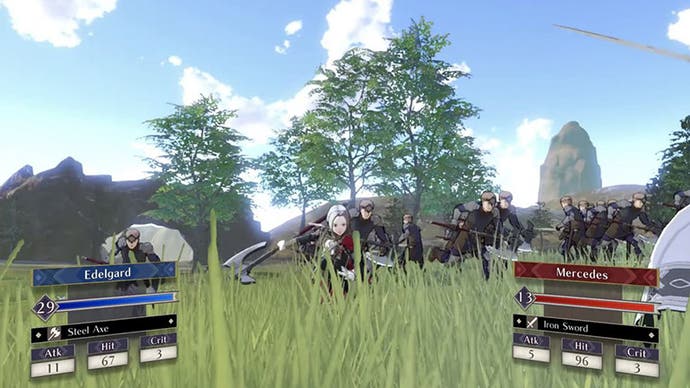
And then, towards the end of every calendar month, there's a mission. Out on the battlefield, there's a marked shift in visual style for Fire Emblem since the last few outings - understandably so, seeing as this is the first big-screen outing for the series since 2007's Radiant Dawn. It's not an unavowed success; the shift back to polygon characters after the cute pixel sprites of the 3DS versions means this is, aesthetically speaking, a step back from the likes of Awakening and Fates, and at times it's downright ugly. But then maybe that's the sacrifice that has to be made when being delivered the sense of scale that Three Houses boasts, as you zoom in on a crowded battlefield and see dense battalions squaring up against one another.
Those battalions are one of several new features that give this Fire Emblem a very distinct flavour. With the old weapon triangle gone, there's now more room to tailor each individual unit towards your own goal, plotting your own path through the broad class system, decking them out with combat arts and abilities and creating a unit that feels entirely your own. The knock-on effect, on the battlefield, is a brand of strategy that's much more pliable than what's gone before, and there's an elegance to the complexity - even if it comes at the expense of some the clockwork pleasure of older games.
This isn't the game to bring together fans of the old-spec Fire Emblem and those drawn in by the appeal of the new. There's a clear divide right through the centre of Fire Emblem: Three Houses, and its masterstroke is in bridging the two, the bonds you build away from the battlefield giving each blow taken on it that much more impact. It's a deeply emotional tactical game, one in which you end up invested in each unit. In that way, it's true to what's always made Fire Emblem so special - it's just that Three Houses expresses itself on a different scale, and a different style. Fire Emblem: Three Houses really is a game of two halves, but they come together to make one incredible whole.
